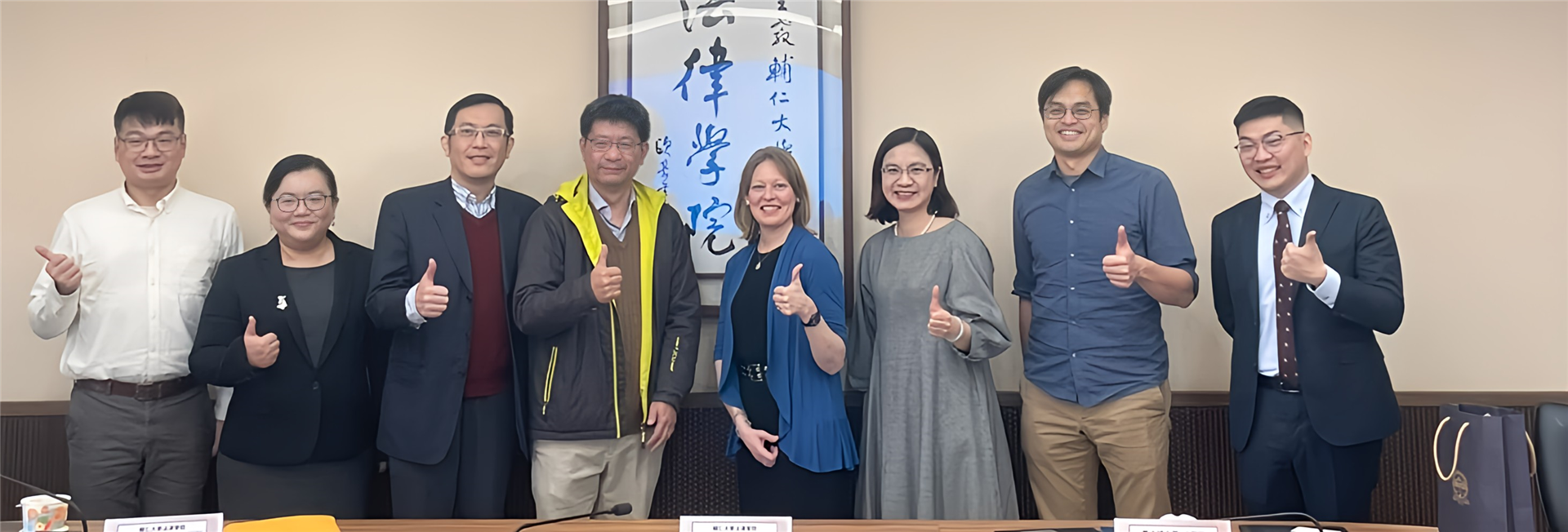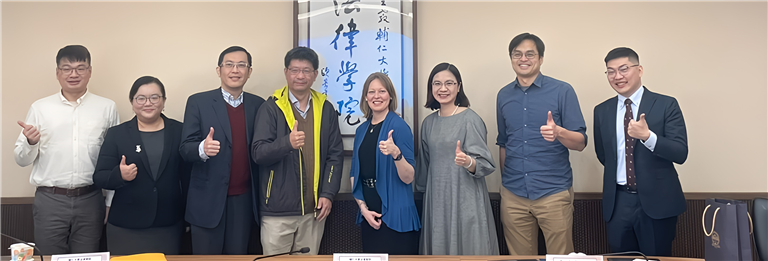輔仁法學第64期
| 論著名稱 | 編著譯者 |
|---|---|
| 歐盟循環經濟的建制與實踐:兼論對台灣的啟示 | 洪德欽 |
自2015年起,歐盟積極推動循環經濟行動計畫,以期最佳化產品生命週期,藉由回收、修復、再利用產品廢棄物,創新設計及製程,更有效利用資源,減少浪費,並達到節能減碳、環境保護、氣候中和與綠色新政等目標,提高經濟效率,確保歐洲永續發展。本文將深度研析歐盟循環經濟的發展背景、政策、論述、工具、行動方案、成效、特徵及影響;同時比較我國相關建制,並提出一些具體建議,做為我國改革之參考,以完善台灣循環經濟體系,提高經濟效率及民生福祉。
關鍵詞:循環經濟、循環經濟行動計畫、歐盟、線性經濟、廢棄物、再利用
Since 2015, the EU has actively promoted a circular economy action plan with the goal of encouraging the recycling, reuse, repair and recovery of waste products, to optimize product life cycle. The circular economy enhances environmental protection and economic efficiency, and aligns with EU policies relating to Green Deal, carbon neutrality, and sustainable development. This paper will conduct a deep study of the EU circular economy including its background, agenda, policy debates, instruments, action plan, features and impacts, as well as comparing these with corresponding system in Taiwan. It also offers some proposals for reforming laws and practices to enhance the circular economy and public welfare in Taiwan.
Keywords: Circular Economy, Circular Economy Action Plan, EU, Linear Economy, Waste, Reuse
壹、前言:循環經濟的發展與論證
一、概念與發展背景
二、學理分析
三、歐盟論證與目標
貳、歐盟循環經濟的建制
一、法律規範
二、歐盟主管機構
三、歐盟循環經濟策略
參、歐盟循環經濟的實踐
一、新循環經濟行動計畫
二、全球領導者
三、意涵與特徵
肆、對台灣的啟示
一、我國法律規定
二、組織建制
三、歐盟循環經濟對我國之啟示
伍、結論
| 論著名稱 | 編著譯者 |
|---|---|
| 探討傳統智慧創作與商標法適用問題 | 林孟玲 |
原住民族傳統文化成果表達之保護,起源於西方殖民主義一連串不名譽的剽竊事件,發生於全球各地而引起的反動。我國原住民族傳統智慧創作遭到誤用或濫用的例子,也時有所聞。舉例而言:電影公司打算將著名電影「賽德克.巴萊」作為商標加以註冊,並使用於商品之銷售,一開始獲得智慧財產局之核准,但經由賽德克族異議,認為損及賽德克族名的神聖性而引發爭議。原住民族傳統智慧創作保護條例之制定,對於保護原住民族傳統智慧創作、文化成果之表達有顯著貢獻;傳智條例的落實,有賴於已經在進行中的傳統智慧創作之登記,以及未來有關智慧創作專用權之授權、侵權、原住民族主張智慧創作專用權等一連串關於權利主張與實現的過程。本研究目的有二。一、著眼於傳統智慧創作登記之後,未來商標申請人如果以含有原住民族文化表達元素的商標申請註冊時,所可能產生之傳智條例與商標法第30條第1項第7款與第8款之商標註冊消極要件適用問題。其二,尚未登記之傳統智慧創作也可能為商標申請人用以申請為商標註冊,此時智財局應如何處理?本文以比較法研究,以紐西蘭2002年商標法為借鏡,研究其規範依據與內涵,提供我國商標法修法之參考。
關鍵詞:原住民族、傳統智慧創作、傳智條例、商標權、商標消極註冊要件、紐西蘭商標法、諮詢義務
A series of events involving traditional indigenous intellectual creations that were misappropriated by Western colonialism has highlighted the need for the protection of these items. Similar cases have also arisen in Taiwan, for example the movie Seediq Bale describes how the Seediq indigenous people fought against the Japanese during the Japanese colonial period. The movie company intended to register Seediq Bale as a trademark to promote commercial products unrelated to tribal culture. Initially the Intellectual Property Office of Taiwan approved the application, however the Seediq people, with the support of the Council of Indigenous Peoples, later claimed the trademark application offended the holy meaning of their tribal name. This case demonstrates the importance of protecting traditional indigenous intellectual creations. The Protection Act for Traditional Intellectual Creations of Indigenous Peoples greatly contributes to the protection of indigenous cultural expressions, and promotes native culture. So far tribes continue registering their traditional intellectual creations. After they gain their intellectual creation exclusivity right, they can claim if there is an infringement in the future. On the other hand, if the trademark applicant tries to register his trademark related to indigenous cultural expression according to Trademark Act, there will be a possible conflict between The Protection Act for Traditional Intellectual Creations of Indigenous Peoples and Trademark Act. Secondly, unregistered traditional intellectual creations are also possibly registered as trademarks. The goal of this article is to discuss and analyze these possible issues in the future. This study will firstly address the dispute caused by the protection between traditional intellectual creations of indigenous peoples. Second, the author will analyze the relationship between registration of traditional intellectual creations of indigenous peoples and Article 30 Paragraph 1 Subparagraphs 7 and 8. Finally, the article will research New Zealand Trade Marks Act as a comparative study while there have been many similar experiences that happened in New Zealand, and hopefully will make a contribution to a possible amendment of the Trademark Act in Taiwan.
Keywords: indigenous peoples, traditional intellectual creations, The Protection Act for the Traditional Intellectual Creations of Indigenous Peoples, trademark right, trademark negative element, New Zealand Trademark Law, duty to consult
壹、前言
貳、傳統智慧創作保護與商標權使用爭議
參、傳統智慧創作登記與商標法第30條第1項第7款與第8款之關聯
一、傳統智慧創作之登記
二、商標消極註冊要件:商標法第30條第1項第7款與第8款之適用
肆、比較法上之諮詢義務
一、國際人權法上的諮詢義務
二、紐西蘭商標法
三、毛利族商標諮詢委員會之設立依據與職權
伍、結語
| 論著名稱 | 編著譯者 |
|---|---|
| 安慰劑治療之刑法評價 | 陳俊榕 |
由於安慰劑治療的方法或效果在醫學上仍不明確,因而當醫師選擇以安慰劑來治療病人時,究竟該如何評價醫師的刑事責任問題,就顯得非常困難。從刑法的角度來看,一方面,醫療行為在本質上就是一種傷害行為;另一方面,對於安慰劑治療的合法性判斷而言,醫療適應性不具有判斷上的獨立或特殊意義,而且安慰劑治療基於其特殊性及個別性的特徵,因此也沒有醫療常規可供遵循,因此,最終只能從病人同意的角度來做討論。依照知情同意原則的要求,病人有效同意的前提是醫師有事前的充分說明,但這一點卻會讓醫師陷入兩難困境,因為:安慰劑就像是一種魔術,一旦病人看穿了魔術的幻象,也就失去了治療的魔力。對於這樣的困境,本文認為應區分不同情形來處理。
另外,由於安慰劑治療的醫療服務不屬於法定的醫療服務項目,因此,當醫師在實際上進行了安慰劑治療,但卻以虛構的真實治療內容向健保署申報費用時,可能就會有詐欺罪的問題。然而,由於醫師在客觀上確實有提供了醫療服務,所以我們不能僅因該服務並非法定的服務項目而否定其經濟價值;相反地,在滿足特定條件的情況下,我們應該要肯定醫師的行為並未造成財產上的損害,因此不會成立詐欺罪。
關鍵詞:安慰劑、安慰劑效應、反安慰劑效應、傷害罪、詐欺罪、醫療適應性、醫療常規、知情同意
The method or effect of placebo treatments is still unclear in medicine. When the physicians choose to treat patients with placebo, it is very difficult to assess the criminal liabilities of physicians. From the perspective of criminal law, on the one hand, medical behavior is essentially an act of harm; on the other hand, for evaluating the legitimacy of placebo treatments, medical indications have no independent or special significance. Moreover, there is no customary medical practice to follow due to the specific and individual characteristics of the placebo treatments. Therefore, in the end it can only be discussed from the perspective of patient’s consent. According to the requirements of the principle of informed consent, the premise of the effective consent of the patient is that the physicians have fully explained in advance. However, it will make the physicians in a dilemma, as the placebo is like a kind of magic, which will disappear once the patient sees through the illusion of magic. For such a dilemma, different situations should be distinguished. Whether the patient's status in clinical manifestations is worsening could for example be the standard. The patient's prior consent should be valid as to the harm caused by the placebo itself. With regard to the worsening status caused by the use of the placebo, the patient's prior consent is invalid.
In addition, as the placebo treatments are not statutory medical services, there may be a problem of fraud when a physician actually performs a placebo treatment but declares the cost to the National Health Insurance Administration, MOHW with a fictitious verum treatment. However, since the physicians did objectively provide medical services, we cannot deny the economic value of the service merely because it is not a statutory service; on the contrary, if certain conditions are met, we should be sure that the physician's actions did not cause property damage, so that the crime of fraud is not established.
Keywords: placebo, placebo effect, nocebo effect, offenses of causing injury, offenses of fraudulence, medical indications, customary medical practice, informed consent
壹、前言
貳、安慰劑的概念與作用
一、安慰劑的歷史發展與相關概念
二、安慰劑的作用、因素與形式
三、小結
參、安慰劑治療涉及的傷害罪
一、醫療行為作為傷害行為
二、安慰劑治療的傷害罪構成要件分析
三、安慰劑治療在醫療行為中的合法性要求
四、小結
肆、安慰劑治療涉及的詐欺罪:以全民健康保險為例
一、施用詐術
二、陷於錯誤
三、處分財產
四、財產損害
伍、結論
| 論著名稱 | 編著譯者 |
|---|---|
| 視察型監督之理論建構與比較法制 | 林政佑 |
本文主要探討視察型監督的法理,並試圖透過比較法研究檢討我國外部視察小組。矯正處遇的目的在於促進受刑人的社會復歸,因此社會有參與矯正處遇參與的責任,而非由刑事設施自身處理完結。社會參與矯正處遇需要的是倫理責任的支撐,而非僅是法律規範,借用Levinas的概念,透過看見受刑人的臉龐,可開啟對他者的溝通,形成倫理責任,超越法律規範帶來的框架限制。由此,行刑社會化與透明化是現代矯正處遇的重要原則,行刑社會化的一環即是公民參與矯正處遇,透明化則是確保社會看到受刑人的可能之外,以及社會對於刑事設施運作的理解。視察型監督作為社會的代表,監督刑事設施,接觸受刑人,促進社會、刑事設施與受刑人三方溝通的可能。於上述應然主張下,本文進一步比較英國獨立視察委員會、日本刑事設施視察委員會與台灣外部視察小組,並且也以欠缺視察型監督而是協力型公民參與矯正處遇的韓國作為對照。從比較法以觀,視察型監督儘管有其限制,但是在社會復歸的促成上是可以期待。本文並提出外部視察小組制度法制與運作上的建議:1.外部視察小組成員應該拓展至非專家的素人,加強社會對刑事設施與受刑人的認識和溝通。2.獨立性需要強化。3.外部視察小組應有研修訓練機制,促進成員可以掌握視察相關知識。4.有必要運用多樣的視察方法與提高視察頻率,如此建立有信任基礎的三面溝通關係,方能有助於社會復歸的實現可能。
關鍵詞:社會復歸、公民參與、外部監督、行刑社會化、行刑透明化
The purpose of correctional treatment is to promote rehabilitation, which involves not only prisoners and correctional facilities, but also society as a whole. Society has a responsibility to participate in corrective treatment, rather than depend exclusively on correctional facilities. Therefore, transparent correctional socialization is an important principle in modern corrections: correctional socialization requires the participation of citizens in correctional treatment, and transparency ensures that members of society can witness actual correctional treatment practices. External prison monitors are representatives of civil society who supervise correctional facilities’ handling of prisoners. Ideally, the monitors promote tripartite communication between society, correctional facilities, and prisoners. In this article, I compare independent monitoring boards in the United Kingdom, penal-institution visiting committees in Japan, external inspection teams in Taiwan, and advisory committees for corrections facilities in South Korea. The first three institutions fall under the category of external prison monitor, whereas the last institution is more of a cooperative and participatory system. In the South Korean case, it can be proved that external prison monitors can help to promote correctional transparency. Through the prism of comparative law, we can see that current external inspection teams have their limits, but can promote social participation in corrective treatment and help facilitate rehabilitation responsibilities. Therefore, I argue that more amateur citizens should participate alongside experts in external inspection teams. In turn, external inspection teams should strengthen the training that their members undergo so that they can sufficiently grasp the principles of prison monitoring. Another change should be in the financial underwriting of external inspection teams: their funding should come not from correctional facilities but from independent sources, which will strengthen the overall independence of the teams. In addition, external inspection teams should improve their use of inspection methods and increase the frequency of inspections. These reforms should individually and collectively strengthen the trust between society, correction facilities, and inmates, and thus promote the possibility of rehabilitation.
Keywords: external monitor, transparency, correctional socialization, rehabilitation, civil participation
壹、前言
貳、視察型監督之理論建構
一、社會復歸目的下的社會參與
二、行刑社會化
三、外部課責與視察型監督
四、刑罰民粹主義的疑慮?
參、視察型監督之比較法制
一、英國
二、日本
三、台灣
四、韓國
五、綜合比較
肆、結論


